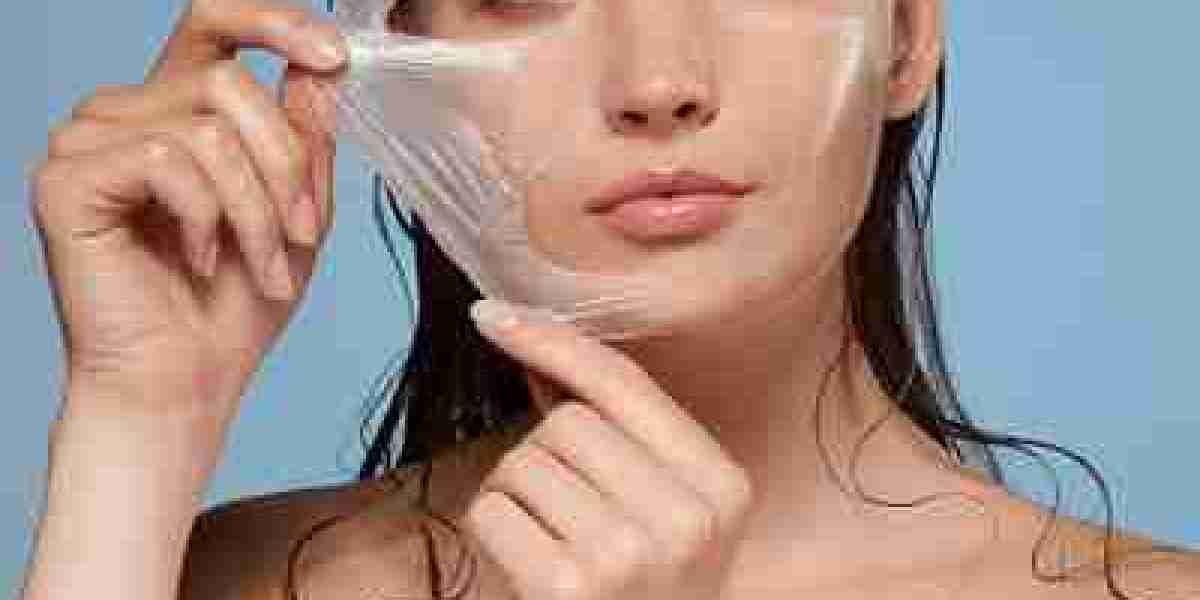Chemical peels in Islamabad are an effective treatment for improving the texture and appearance of the skin, with benefits ranging from reducing fine lines and wrinkles to improving acne scars, sun damage, and hyperpigmentation. However, as with any cosmetic procedure, it’s important to understand whether chemical peels are suitable and safe for all skin types. The short answer is no, not all skin types respond the same way to chemical peels, and understanding how your skin type interacts with the procedure can help you make an informed decision.
In this blog, we’ll explore how chemical peels work, how they affect different skin types, and whether chemical peeling is safe for you based on your skin’s characteristics.
What is a Chemical Peel?
A chemical peel is a cosmetic procedure that involves applying a chemical solution to the skin. This solution exfoliates the outer layers, which removes damaged skin cells and promotes the growth of new, healthier skin underneath. The result is smoother, more even-toned skin with fewer blemishes, fine lines, and wrinkles.
There are three main types of chemical peels:
Superficial Peels: These are the mildest peels that target only the outermost layer of skin. They use acids like alpha-hydroxy acids (AHAs) or salicylic acid and are typically used for mild skin concerns such as uneven skin tone, acne, or fine lines.
Medium Peels: These peels penetrate deeper layers of the skin to address more pronounced issues like deeper acne scars, sun damage, or moderate wrinkles. Trichloroacetic acid (TCA) is often used in medium peels.
Deep Peels: These peels are the most intense, using strong acids like phenol to treat severe skin issues such as deep wrinkles, significant sun damage, and deep scars. Deep peels require a longer recovery period and are suitable for individuals with more substantial skin concerns.
How Do Chemical Peels Affect Different Skin Types?
Your skin type—whether it's oily, dry, sensitive, or a combination—can influence how well your skin responds to chemical peeling. Let's break down how each skin type interacts with chemical peels:
1. Normal Skin
For individuals with normal skin, chemical peels tend to be safe and highly effective. Normal skin is balanced and doesn't have significant dryness, sensitivity, or excess oil, so it usually responds well to superficial, medium, and even deep peels. The main benefit of a chemical peel for normal skin is its ability to brighten skin tone, reduce mild wrinkles, and promote cell turnover without causing irritation.
Best Peels: Superficial and medium peels are usually sufficient for normal skin, although deep peels can be used depending on the skin’s needs.
Considerations: As long as proper aftercare is followed, normal skin will usually heal quickly and see visible improvements within a week to two weeks.
2. Oily Skin
Oily skin tends to be thicker and has larger pores, which can make it more prone to acne, blackheads, and enlarged pores. Chemical peels can be especially beneficial for those with oily skin, as they help regulate oil production, clear clogged pores, and improve overall skin texture.
Best Peels: Salicylic acid-based peels are ideal for oily skin because salicylic acid penetrates deep into the pores, helping to unclog them. Superficial peels are also a great option for oily skin, as they can target surface issues like acne breakouts, while medium peels may also address deeper concerns like acne scars.
Considerations: People with oily skin may need more frequent treatments to maintain results, especially for ongoing acne management.
3. Dry Skin
Dry skin can be more sensitive and prone to irritation, making it essential to choose the right type of chemical peel. For individuals with dry skin, chemical peels can help exfoliate dead skin cells and reveal a softer, smoother complexion. However, there is a risk of over-exfoliating or exacerbating dryness if not done correctly.
Best Peels: Superficial peels using gentle AHAs (like glycolic or lactic acid) are typically recommended for dry skin because they provide gentle exfoliation without stripping the skin of moisture. It’s important to hydrate the skin properly after the procedure to avoid exacerbating dryness.
Considerations: People with dry skin should avoid deep peels, as they can be too harsh and may lead to further dryness or peeling. Aftercare is crucial to ensure the skin remains moisturized.
4. Sensitive Skin
Sensitive skin is more prone to irritation, redness, and allergic reactions, which can make it difficult to use certain skincare products or undergo certain treatments. If you have sensitive skin, it’s important to be cautious when considering chemical peels. That being said, many people with sensitive skin can still benefit from milder chemical peels, as long as they’re carefully selected and applied.
Best Peels: Superficial peels with mild ingredients such as mandelic acid or a gentle glycolic acid peel are the best options for sensitive skin. These peels exfoliate the skin gently without causing intense irritation. Patch testing is strongly recommended before undergoing any peel to ensure your skin can tolerate the treatment.
Considerations: Avoid deep and medium peels, as they can cause intense irritation or redness in sensitive skin. Be sure to follow up with soothing, hydrating aftercare products to calm the skin.
5. Dark or Melanin-Rich Skin (Fitzpatrick Skin Types IV-VI)
People with darker skin tones need to be extra cautious with chemical peels, especially when using medium or deep peels. This is because deeper peels can increase the risk of hyperpigmentation, a condition where the skin darkens in response to injury or irritation. People with darker skin have more melanin, and if a chemical peel is too aggressive, it can trigger the overproduction of melanin, leading to unwanted dark spots.
Best Peels: Superficial peels using milder acids like glycolic acid, lactic acid, or salicylic acid are often the safest and most effective option for darker skin. Medium peels can be done, but with caution, and under the supervision of a skilled professional who understands how to prevent hyperpigmentation.
Considerations: It’s crucial for people with darker skin to choose a provider experienced in treating melanin-rich skin. Proper aftercare, including avoiding sun exposure, is especially important to prevent pigmentation issues.
Is Chemical Peeling Safe for All Skin Types?
In conclusion, while chemical peels are generally safe for most skin types, the key to ensuring the procedure’s safety is selecting the appropriate peel based on your skin’s specific needs and characteristics. Here’s a summary of the safety considerations:
Normal and Oily Skin: Chemical peels are generally safe for these skin types, with minimal risk of irritation. Superficial and medium peels work well to address concerns like acne, hyperpigmentation, and fine lines.
Dry and Sensitive Skin: For individuals with dry or sensitive skin, it's important to opt for gentler peels. Mild AHAs and salicylic acid peels are recommended, and deep peels should be avoided. Proper hydration and aftercare are essential to avoid worsening dryness or irritation.
Dark Skin: People with darker skin tones should be cautious with medium and deep peels due to the risk of hyperpigmentation. Superficial peels with milder acids are generally safe, but it’s important to seek treatment from an experienced professional to minimize the risk of complications.
Final Thoughts
Chemical peels are a highly effective way to improve the appearance and health of your skin. However, to ensure the treatment is safe and beneficial for you, it’s crucial to understand your skin type and choose the appropriate peel. Always consult with a licensed dermatologist or skincare professional who can assess your skin and recommend the best treatment plan. When done correctly and with proper aftercare, chemical peels can provide dramatic results for a variety of skin types.






